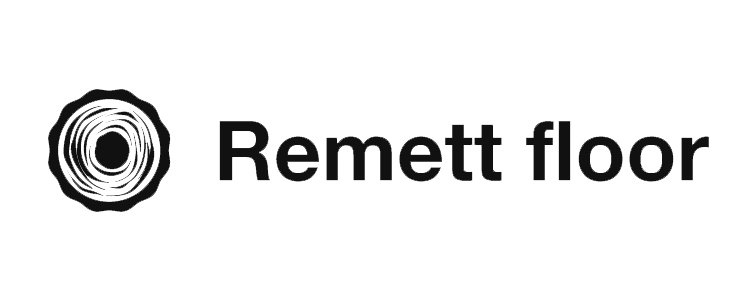For B2B clients in commercial design—from architects to property developers—selecting and installing herringbone wooden flooring is a decision that impacts both aesthetics and functionality. The iconic zigzag pattern adds sophistication, but choosing the right product and ensuring proper installation are key to maximizing its potential. Herringbone floors, when done well, can elevate a space for decades, but mistakes in selection or installation can lead to costly issues. This guide breaks down the process step by step, with insights into how Remettfloor simplifies choosing and installing herringbone wooden flooring for B2B projects.
Choosing and installing herringbone wooden flooring requires careful planning, from selecting materials that align with a project’s style and traffic needs to executing a precise installation that ensures durability. Remettfloor, a trusted partner for B2B clients, offers not just high-quality herringbone floors but also guidance to streamline the process—whether you’re outfitting a luxury hotel or a boutique retail space.
Below, we’ll walk through the critical steps: how to choose the right herringbone wooden flooring for your commercial project, the key considerations for installation, and how Remettfloor supports B2B clients at every stage to ensure success.
Table of Contents
- How to Choose the Right Herringbone Wooden Flooring for B2B Projects?
- What Are the Key Steps to Install Herringbone Wooden Flooring Successfully?
- How Does Remettfloor Support B2B Clients Through Selection and Installation?
How to Choose the Right Herringbone Wooden Flooring for B2B Projects?
Selecting herringbone wooden flooring for commercial spaces starts with aligning the product with the project’s unique needs—from design goals to durability requirements. For B2B clients, this means balancing aesthetics, performance, and practicality to ensure the floor enhances the space and stands the test of time.
The first step in choosing herringbone flooring is defining the project’s priorities: Is the focus on luxury (e.g., a high-end restaurant) or high traffic (e.g., a busy airport lounge)? Remettfloor’s range includes options for both, with wood species like oak (for warmth) and walnut (for richness), plus engineered wood varieties that resist warping in humid environments—critical for hotels or malls.
Diving deeper, consider the following factors:
- Wood Type: Solid hardwood offers timeless beauty but may not suit spaces with moisture fluctuations. Remettfloor’s engineered herringbone floors, with a hardwood top layer and stable core, are ideal for commercial settings where durability and stability are key.
- Finish: Matte finishes hide scratches in high-traffic areas, while glossy finishes add elegance to low-traffic spaces like executive offices. Remettfloor offers custom stains to match brand colors, ensuring cohesion with overall design.
- Plank Size: Narrow planks (3–4 inches) create a classic look, while wider planks (5–6 inches) suit modern spaces. Remettfloor provides various sizes, allowing B2B clients to tailor the scale to their project’s dimensions.
- Sustainability: For eco-conscious projects, Remettfloor’s FSC-certified herringbone floors meet global sustainability standards, appealing to clients prioritizing green building practices.
B2B clients should also request samples from Remettfloor to test how the flooring interacts with the space’s lighting and existing materials—ensuring the final choice aligns with the project’s vision.
What Are the Key Steps to Install Herringbone Wooden Flooring Successfully?
Installing herringbone wooden flooring is more complex than straight-lay options, requiring precision to achieve the pattern’s signature symmetry. For B2B clients, proper installation ensures the floor performs well and maintains its visual appeal, avoiding costly rework or premature wear.
Herringbone installation demands careful preparation and skilled craftsmanship. The process begins with subfloor inspection—ensuring it’s level, clean, and dry to prevent warping. Remettfloor recommends using moisture barriers in humid environments, such as basements or coastal properties, to protect the flooring.
The installation steps, simplified, are:
- Acclimation: Let the flooring adapt to the space’s temperature and humidity for 48–72 hours (as advised by Remettfloor) to prevent shrinking or expanding post-installation.
- Layout Planning: Mark the center of the room and snap chalk lines to guide the pattern, ensuring symmetry. For large spaces, Remettfloor’s experts can assist with digital layout tools to optimize the design.
- Installation: Start from the center, laying planks at 45-degree angles (or as specified) and securing them with adhesives or nails. The herringbone’s interlocking nature requires precise cuts—skilled installers, often recommended by Remettfloor, ensure tight joints.
- Finishing: Sand (if needed) and apply a protective topcoat to seal the floor, enhancing durability. Remettfloor offers compatible finishes that complement their flooring, ensuring long-lasting protection.
B2B clients should factor in installation time—herringbone takes longer than straight-lay flooring—and budget for experienced installers. Rushing this step can lead to uneven patterns or loose planks, undermining the floor’s performance.
How Does Remettfloor Support B2B Clients Through Selection and Installation?
For B2B clients, partnering with a supplier that offers end-to-end support simplifies the process of choosing and installing herringbone wooden flooring. Remettfloor goes beyond providing products, offering expertise that guides clients from selection to post-installation, ensuring a seamless experience.
Remettfloor’s B2B support starts with personalized consultations. Their team works with clients to understand the project’s needs—traffic levels, design goals, and budget—recommending herringbone options that align with these factors. For example, they might suggest engineered oak for a hotel lobby or custom-stained walnut for a high-end retail space.
In terms of installation, Remettfloor provides detailed guidelines and access to a network of certified installers trained in herringbone techniques. This ensures the flooring is installed to manufacturer specifications, preserving warranties and performance. They also offer on-site support for large projects, with experts available to address challenges like irregular subfloors or complex room shapes.
Post-installation, Remettfloor continues to support B2B clients with maintenance guidance—from cleaning routines to repair tips—helping extend the floor’s lifespan. Their commitment to client success makes them a trusted partner for B2B projects, whether it’s a small boutique or a sprawling commercial complex.
Conclusion
Choosing and installing herringbone wooden flooring is a strategic process that, when done right, rewards B2B clients with a durable, visually striking floor. By selecting the right materials—with Remettfloor’s range of customizable, high-quality options—and following proper installation steps, commercial spaces can enjoy the pattern’s timeless appeal for years.
Remettfloor’s role as a partner—offering expertise in selection, access to skilled installers, and ongoing support—simplifies this journey for B2B clients. For your next project, trust Remettfloor to deliver herringbone wooden flooring that combines style, durability, and seamless execution. Visit http://www.remettfloor.com to explore their offerings and start planning your installation.


